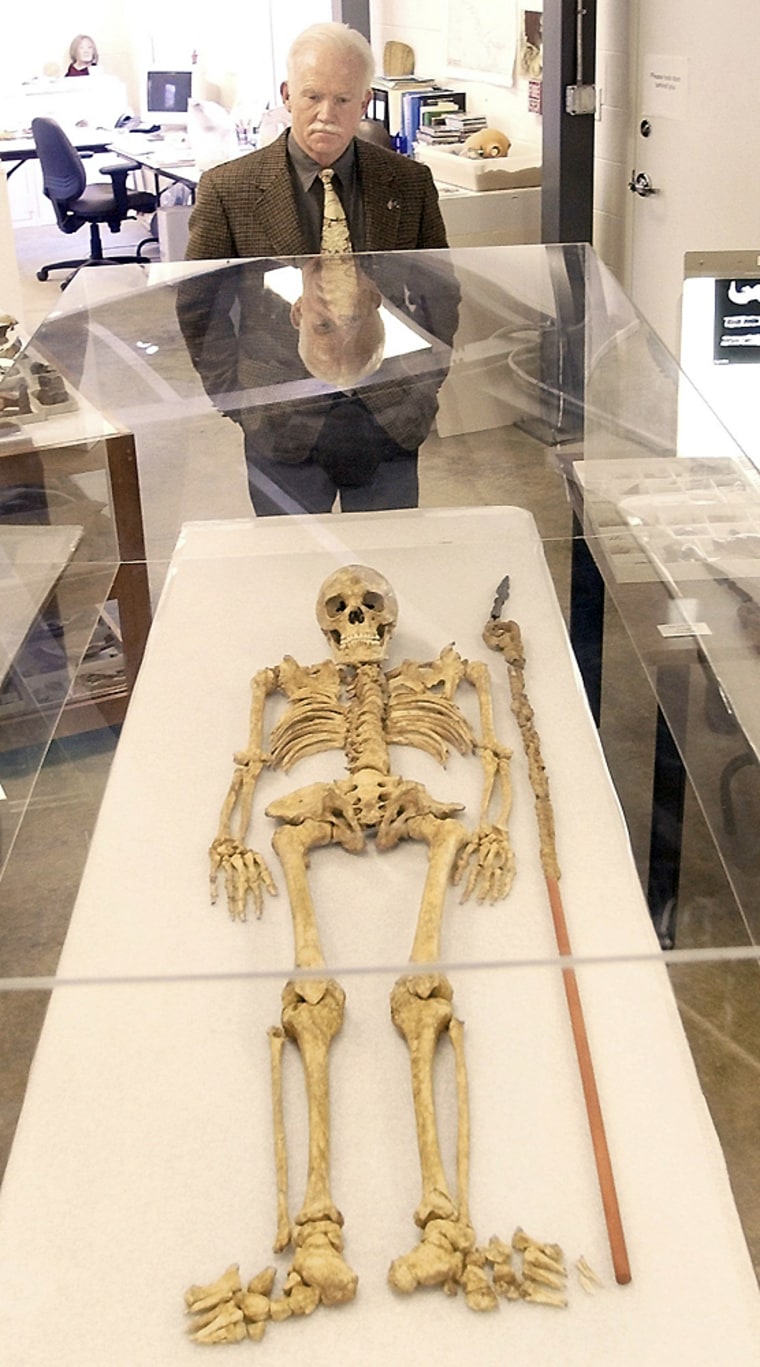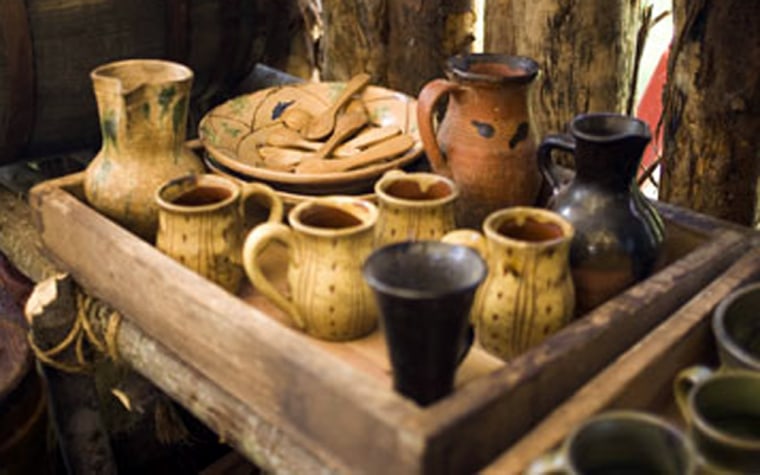In 1957, archaeologists determined that the remains of the historic fort at Jamestown no longer existed and had probably washed into the James River. But a young graduate student named William Kelso wasn’t convinced.
Three decades after visiting the site of North America’s first permanent English settlement, Kelso returned as an archaeologist and discovered evidence of the fort’s remains. He and his team have gone on to discover hundreds of thousands of 17th-century artifacts.
Today, as Virginia prepares to commemorate the 400th anniversary of the settlement, Kelso is chief archaeologist of the site and one of the experts consulted during the making of “The New World,” the $30 million Hollywood epic starring Colin Farrell that opens nationwide Jan. 13.
Kelso said he was amazed when he first saw the rough log posts of the movie-set fort, which he said looks exactly like the one he documented. The re-created fort also was built on land close to Jamestown Island, the site of the original fort.
“It’s like (being in) a time machine,” he said.
Nothing left?
In the 1960s as a graduate student eager to see the site of the fort on Jamestown Island, Kelso was disheartened when a park ranger told him that nothing was left of it.

Excavations before the 350th anniversary of the colony’s founding had uncovered no evidence of the structure, and scientists concluded that it and the land around it had been washed away.
But Kelso looked at a cross-section of a mound of dirt left from the dig and saw different colors in the soil, an indication of historical periods. “What about that dark layer there?” he asked.
The question lay in the back of Kelso’s mind for more than 30 years, until he returned as an archaeologist to search for remains of the fort.
The dark layer was, in fact, significant. Kelso began work alone with a shovel in April 1994, and within an hour was finding artifacts. Since then, he and a team have found the entire outline of the triangular fort built in 1607.
Among the major discoveries at the settlement has been a skeleton believed to belong to one of the colony’s founders, Bartholomew Gosnold, although the identity could not be proved through DNA tests.
Clearer picture of colonial life
Kelso’s work has led to a clearer picture of life in the colony and can perhaps shed more light on the settlers’ relationship with the American Indians who lived in the area.
“We definitely have evidence of tremendous interaction between the two groups,” he said.
The scientists not only have found a number of items such as shell beads and the kind of arrow points the Indians were making then, but also evidence that those items were being made inside the fort.
There are far more Indian artifacts in the fort than would have been traded, Kelso said. “This is like the Virginia Indians were living here,” he said.
Kelso, 64, said he believes the fort had a rugged border as depicted in the movie, rather than the tall pickets that ring the state-owned reconstructed village of Jamestown near the island excavation. He said the original fort was built in only 19 days.
But the state’s Jamestown Settlement is interpreting a later period — 1610-1616 — and by then there was time to split logs for a fence, said curator Thomas Davidson.
Changes in the future
In the future, some of the state’s Jamestown interpretation will change to conform with more recent archaeological discoveries, Davidson said. Its exhibits were based on documents that did not go into much detail of daily life.
The fort site was rich with artifacts because it lay undisturbed except for the erection of a Confederate Army earthwork in 1861, according to Kelso. The Association for the Preservation of Virginia Antiquities saw to its protection, organizing to acquire 22.5 acres that include the fort site in 1893.
In 11½ years of digging, archaeologists have stowed away 700,000 artifacts, including a huge collection of early 17th-century Tudor and Stuart period objects. Those pieces have attracted the interest of the English.
One of Kelso’s favorite relics from the fort is a signet ring bearing the family crest of William Strachey, a friend of William Shakespeare who arrived in 1610 after his ship wrecked in a hurricane. Strachey’s written description may have inspired the setting for Shakespeare’s “The Tempest.”
“Most people don’t think American history can be Shakespearean,” Kelso said. “We always start American history with Washington and Jefferson.”
